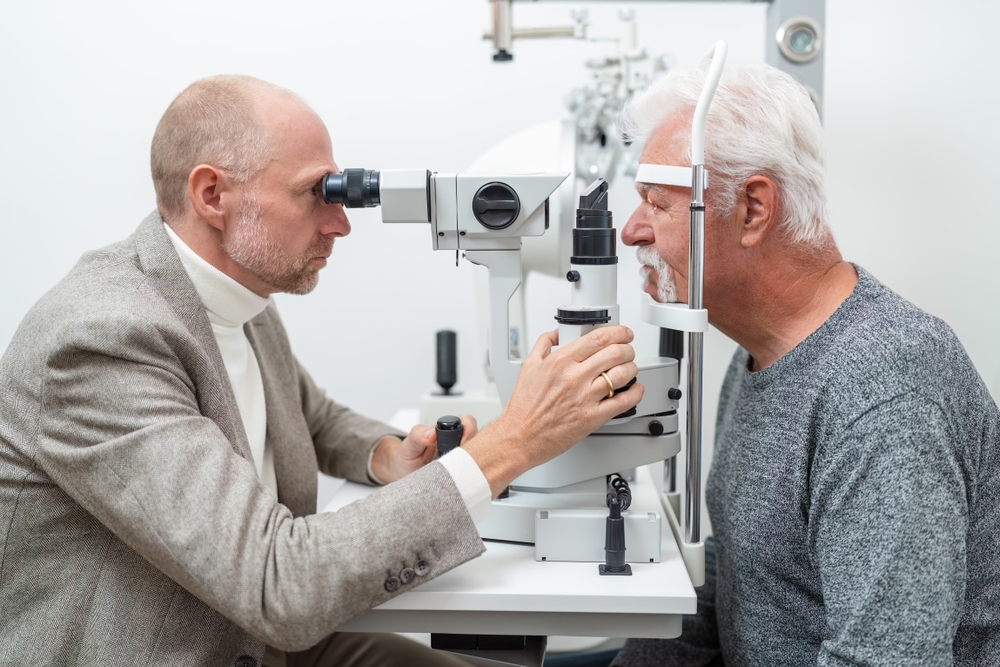Diabetic retinopathy is an eye condition that affects roughly one in three people with diabetes, leading to vision loss and even blindness in advanced cases. However, lifestyle changes can help protect your vision and slow the progression of the disease.
Keep reading to learn more about seven lifestyle changes the ophthalmologists at South Texas Eye Institute recommend to help diabetic retinopathy.
How Does Diabetes Affect Your Vision?

Diabetic retinopathy develops when high blood sugar levels damage the tiny blood vessels in your retina. These weakened vessels leak fluid and blood, gradually compromising your vision. In advanced stages, abnormal blood vessels grow on the surface of the retina, leading to more serious complications, such as retinal detachment.
Your daily habits directly influence how quickly this damage progresses. Blood sugar fluctuations, inflammation, and vascular health all respond to lifestyle choices. This means you have more control over your vision health than you might realize.
Here are seven changes you can implement to help reduce your risk of vision loss from diabetic retinopathy:
1. Blood Sugar Management
Maintaining stable blood sugar levels is one of the most powerful tools you have against diabetic retinopathy. Research consistently shows that people who maintain good glycemic control significantly reduce their risk of developing vision problems.
This goes beyond checking your glucose readings. South Texas Eye Institute ophthalmologists recommend collaborating with your diabetes care team to establish a personalized monitoring routine tailored to your specific needs. Some patients benefit from continuous glucose monitors that provide real-time feedback, while others manage their diabetes effectively with traditional finger-stick testing several times a day.
The key is understanding how different foods affect your blood sugar and learning to spot patterns. When you eat matters almost as much as what you eat. Spreading meals throughout the day helps prevent the spikes and crashes that stress your retinal blood vessels.
2. Dietary Changes
Dr. Marten at South Texas Eye Institute emphasizes that no single “diabetic diet” works for everyone. Instead, she helps patients understand which food choices support both blood sugar control and eye health.

Focus on whole foods that don’t cause rapid increases in blood sugar. Vegetables, lean proteins, healthy fats, and high-fiber foods form the foundation of a diet that supports retinal health. These choices help maintain steady glucose levels throughout the day.
Omega-3 fatty acids deserve special attention. Found in fatty fish, walnuts, and flaxseeds, these compounds support the health of retinal blood vessels and may help reduce inflammation that contributes to the progression of diabetic retinopathy.
Many patients don’t realize that what they drink matters too. Sugary beverages can cause rapid blood sugar spikes, which can damage the delicate structures of the eyes. Water, unsweetened tea, and other low-sugar options are better choices for maintaining stable glucose levels.
The Mediterranean eating pattern has shown particular promise for people with diabetes. This approach emphasizes vegetables, olive oil, fish, and whole grains while limiting processed foods and added sugars. Patients who follow this style of eating often experience improvements in both their blood sugar control and overall vascular health.
3. Physical Activity
Exercise benefits your eyes in multiple ways. Regular physical activity enhances insulin sensitivity, enabling your body to utilize glucose more effectively. This translates directly to better blood sugar control and less stress on retinal blood vessels.
Movement also improves circulation throughout your body, including the tiny vessels in your eyes. Better blood flow means your retinas receive adequate oxygen and nutrients while waste products are removed efficiently.
South Texas Eye Institute ophthalmologists typically recommend at least 30 minutes of moderate activity most days of the week. This doesn’t require a gym membership or expensive equipment. Walking, swimming, cycling, or dancing all provide substantial benefits. The important thing is finding activities you enjoy enough to do consistently.
Strength training deserves mention, too. Building muscle mass enhances how your body processes glucose, which aids in long-term blood sugar management. Two or three strength training sessions per week complement aerobic exercise nicely.
Always check with your healthcare provider before starting a new exercise program, especially if you already have diabetic retinopathy. Certain activities might need to be modified depending on the severity of your eye condition.
4. Blood Pressure and Cholesterol Maintenance
High blood pressure accelerates diabetic retinopathy progression by putting additional stress on already weakened blood vessels. Many patients focus so intently on blood sugar that they overlook this important factor.
Keeping blood pressure below the target your doctor recommends helps protect your retinas from further damage. Lifestyle changes that support healthy blood pressure include reducing sodium intake, managing stress effectively, staying physically active, and maintaining a healthy body weight.
Cholesterol levels also influence the risk of diabetic retinopathy. High cholesterol can lead to lipid deposits in the retina and worsen blood vessel damage. The same dietary changes that help control blood sugar levels often also improve cholesterol levels.
5. Smoking Cessation
If you smoke and have diabetes, stopping is one of the most important things you can do for your eyes. Smoking constricts blood vessels, reduces oxygen delivery to tissues, and increases inflammation throughout your body. All of these effects worsen diabetic retinopathy.
Smoking also makes blood sugar harder to control, creating a harmful cycle. The chemicals in tobacco damage blood vessel walls, making them more susceptible to the effects of high glucose levels.
South Texas Eye Institute can connect you with resources to help you quit. Many patients succeed with a combination of behavioral support and, when appropriate, medications that reduce cravings.
6. Prioritizing Stress Reduction and Rest
Chronic stress raises blood sugar levels and increases inflammation. Both of these factors accelerate the progression of diabetic retinopathy. Finding effective ways to manage stress can protect your vision and improve your overall diabetes management.
Different approaches work for different people. Some patients benefit from meditation or deep breathing exercises. Others find relief through yoga, spending time in nature, or pursuing creative hobbies. The goal is to find sustainable practices that genuinely help you feel calmer and more balanced.
Sleep quality has a significant impact on blood sugar control that most people are unaware of. Poor sleep increases insulin resistance, making it harder to maintain stable glucose levels. Aim for 7 to 9 hours of quality sleep each night. Establish a consistent sleep schedule, create a dark and quiet sleeping environment, and avoid screens before bedtime.
7. Attending Regular Eye Exams

Lifestyle changes are most effective when combined with professional guidance and monitoring. South Texas Eye Institute ophthalmologists recommend that all patients with diabetes undergo comprehensive dilated eye exams at least once a year. These exams can detect diabetic retinopathy long before you notice any changes in your vision.
Early detection allows for timely intervention. When caught in its early stages, diabetic retinopathy responds better to treatment. Combined with lifestyle modifications, early medical intervention can often preserve vision that might otherwise be lost.
During your exam, your ophthalmologist will look for signs of blood vessel damage, fluid leakage, and abnormal vessel growth. If changes are detected, various treatment options are available, including laser therapy and medications injected into the eye.
Diabetic retinopathy is a serious condition, but it’s also manageable. The lifestyle changes ophthalmologists recommend are the same habits that improve overall health and diabetes management. By taking control of these factors, you can significantly reduce your risk of vision loss.
Stay on top of your diabetes and eye health when you schedule your appointment at South Texas Eye Institute in San Antonio, TX, today!

